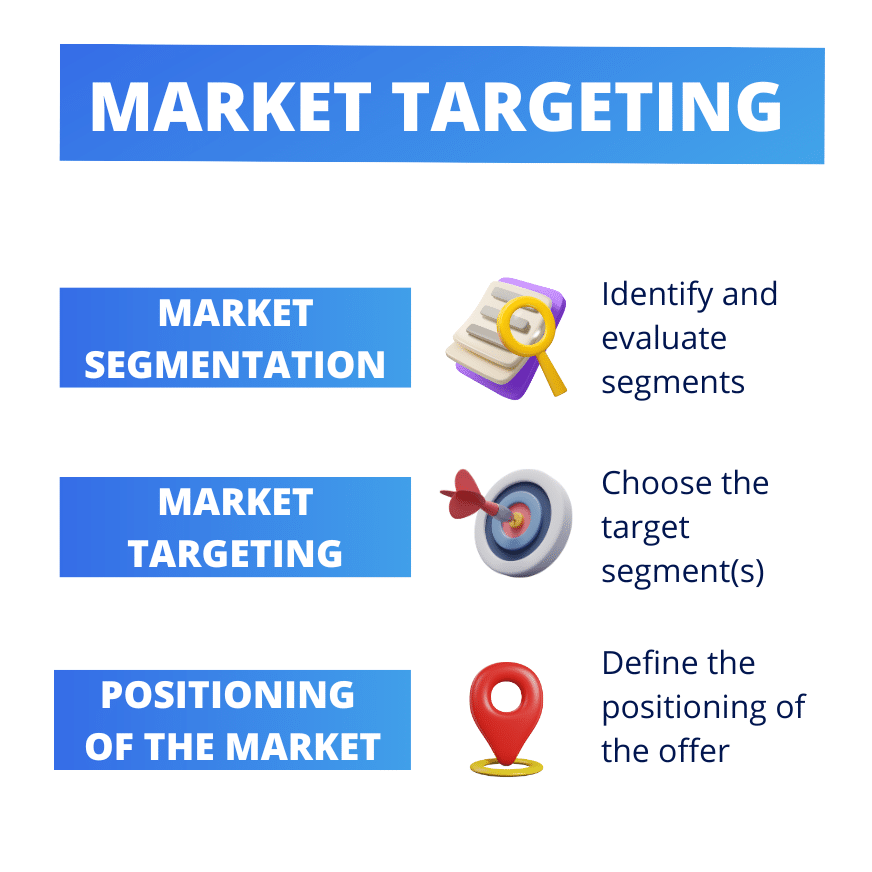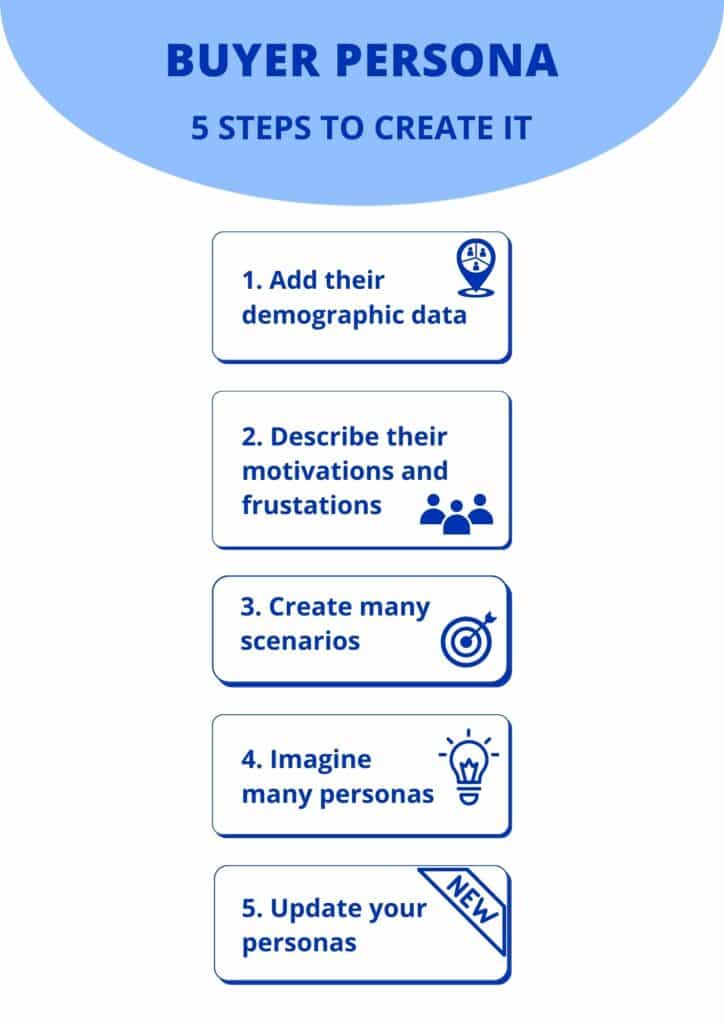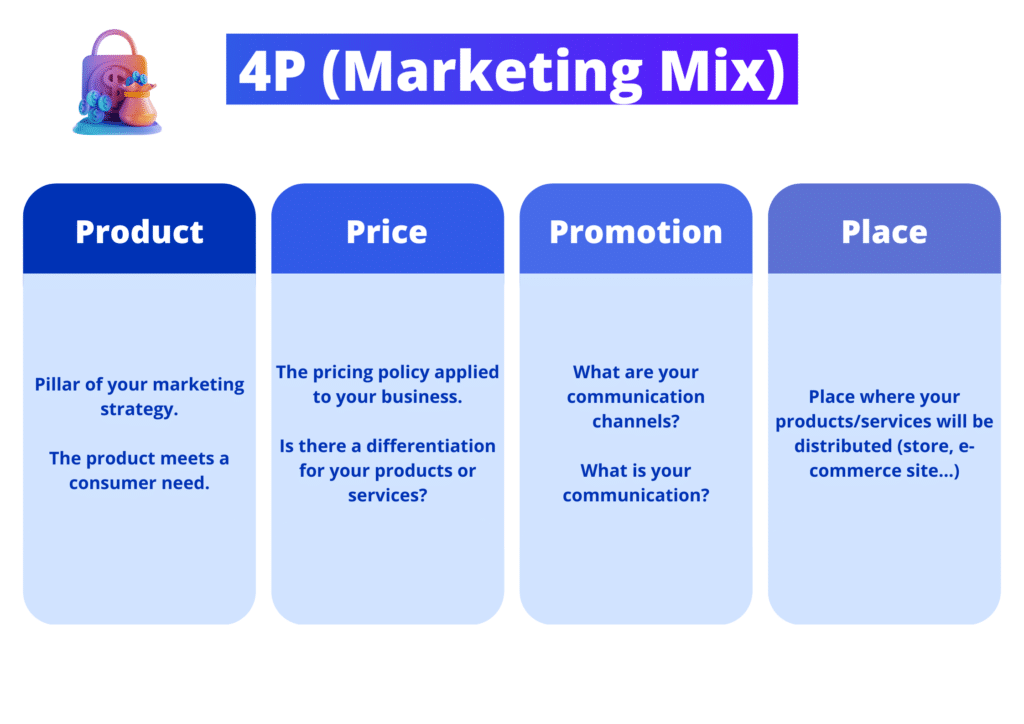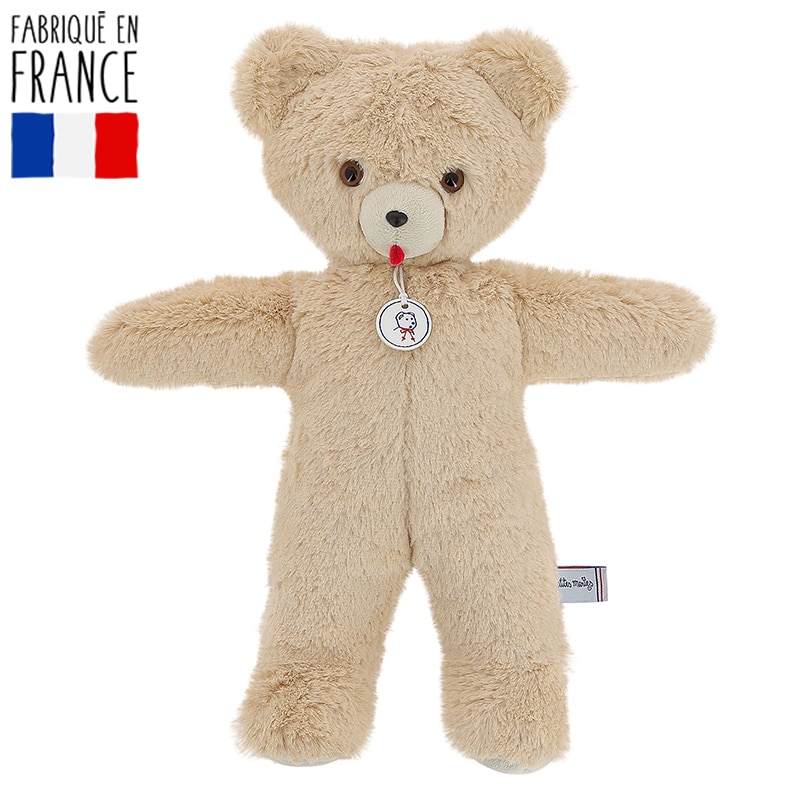Good marketing targeting ensures that your product will find its place in the market. 🛍️ This is why segmenting and defining the profiles of your “buyer personas” is essential for your business. ⚡
Let’s find out together how to get your targeting right in this article!
Marketing Targeting Definition
What are the different types of targeting in marketing?
Next, we’ll look at the different customer targets, 🔍 you’ll find the definitions below.
💡 Here’s an infographic on the stages of marketing targeting:
- Market Segmentation,
- Market Targeting,
- Product and Brand positioning.

Let’s take a closer look! 👇
1. Marketing Targeting Definition:
Targeting consists in creating a marketing segmentation for which consumers have expressed expectations that the company can satisfy through the products and/or services it markets.
Targeting is the last step in the strategic approach, and is done after segmenting the market and before determining its location. 📌 It’s a question that identifies the consumer groups most interested in the product and how it differentiates it from competing products. 🧐
In addition, targeting enables a company to identify the market segments it wishes to reach and shape its marketing strategy. Effective targeting prevents the company from focusing on segments with low profitability potential (“ROI”). 🤑
By focusing on typical customer profiles or « buyer personas », the company concentrates its resources and efforts on the expectations expressed by these segments.

👉 Note that the choice of targeting strategy depends on the company’s objectives, resources, and current market position.
2. Definition of Marketing Segmentation:
In marketing, we speak of market segmentation, as we break down the market into sub-categories, to define the profile of the target consumer. These segments are defined by the product targeted and the type of « persona » or potential customer.
Strategic segmentation enables you to target consumer segments likely to be interested in your product, and to position yourself in these specific markets. 🏹 Segmentation criteria depend on the specific characteristics of the target market and consumer behavior.
They are studied according to various characteristics (age, gender, work, purchasing habits, etc.), gathered during market research. 🤓
👉 We also use the « lead scoring method » RFM (Recency, Frequency, Amount) to refine data analysis based on past orders placed on your website, for example.

3. Definition of Marketing Positioning:
In general, positioning refers to the position of a product/brand according to consumers, in relation to similar and/or competing products. Product price, product features and brand image all influence product positioning. 🎯
The term can also be defined from a commercial perspective. It then specifies the position the company seeks to achieve for one of its products or services. The aim here is to present a product so that it stands out from a competitive product.
👉 In both cases, positioning is an integral part of the « marketing mix » or 4P marketing. It is often combined with marketing actions to promote and demonstrate the added value of products/services.

Target Marketing Examples
1. How do you target your business?
We can identify 3 marketing strategies for relevant market targeting: 👇
- Differentiated targeting marketing: 🥇 a product is aimed at a segment. By offering a product, whose characteristics match perfectly the expectations of target segments, the company ensures a perfect match between supply and demand. 🧲 Be careful not to address too small a market segment when differentiated marketing.
- Mass marketing: 🥈 a product that targets several segments. When many typical consumer profiles share certain interests, the company may choose to propose an offer that meets the common needs of these different segments. Mass marketing generally relies on lower supply costs rather than differentiated product features. Examples include the physical stores (or not) of « hard discount » which attract several types of customer profile through advertising campaigns, such as Lidl or ManoMano in France. 💪 However, pay attention to market developments when you’re doing mass marketing so that the offer always matches needs.
- Multi-segment marketing: 🥉several products, each aimed at a different segment. To ensure maximum market coverage, the company can propose differentiated offers according to the expectations of each segment. Take, for example, carmakers offering compacts, SUVs, sedans, 4×4s, etc. 🚗 Be sure to draw up a very precise marketing plan for successful multi-segment marketing.
2. Examples of Target Markets
Companies define their target market to understand who they’re selling to and how to reach those people through marketing efforts. In practical terms, any product or service on the market today can be considered aimed at a certain niche market segment. 🎯
Various criteria, such as common attributes or demographic qualities, can define a target market. 🧐
Here are 3 detailed examples of target markets and the products they might sell. 👇
Example marketing target no. 1: Plush toys « Made in France » aimed at young children aged 0 to 5.
🧸 Let’s imagine together the core target audience for the fictitious « Made in France » plush/toy brand for toddlers . 🗼 The marketing target is parents with children aged 0 to 5 .
The core target is parents with young children aged between 30 and 45, with a strong awareness of responsible consumption and high purchasing power ( toys thought and designed in France are pricier than other products on the market) .

💡 The main target of this fictitious brand would be :
- Core target: Parents with one or more children aged 0 to 5, who show a keen interest in responsibly designed toys/toys and who like to offer their children quality products .
- Gender: Female and male.
- Age : Between 30 and 45 .
- Buying power: High.
- Habits: Like to spend more money to support local brands and ensure items are of high quality and responsibly designed .
Targeted marketing example no. 2: Vegan running shoes made from recycled materials
🏃 In this example, we can imagine that the overall marketing target for these running shoes is environmentally conscious athletes aged 25 to 40. 🌱
So , the core target is mostly young adults aged 25 to 40 , as this is an eco-responsible brand that makes trendy shoes in an environmentally friendly way, their purchasing power is quite high .
Imagine now, that the brand favors communication on social networks and regularly works with influencers to reinforce its image as a trendy, responsible brand ».

💡 In summary, the main objectives of this fictitious brand are :
- Core target: Athletes concerned about the environment, interested in trends, active on social networks, followers of « fitness influencers ».
- Gender: Female and male.
- Age : 25 to 40 .
- Purchasing power: High.
- Habits: Often buy online.
Targeted marketing example no. 3: Supplier of quality boxed lunches for professionals
🍜 Finally, let’s take the example of a lunchbox supplier who offers online ordering and delivery for employees who don’t have time to cook , and costs much less than a lunchtime restaurant .
🧲 In this case , the core target is busy, middle-income earners aged 25 to 35 .

💡 Basically, the core target of this fictitious brand is :
- Core target: young employees who are used to shopping online, with a moderate budget , who prefer good food delivered to them, to cook for themselves.
- Gender: Female and male.
- Age : 25 to 35.
- Purchasing power: Medium.
- Habits: Accustomed to eating out, eager to consume quality food, and who prefer delivery.
👉 Of course, these examples are just sketches, to give you an idea of where to start.
You’ll need to do more research depending on your field of activity, and include as many elements as possible in the make-up of your target audience . ⚡
3. Targeting based on Demographic Segmentation:
Demographic segmentation categorizes customers based on certain characteristics such as age or economic level. 📊
Using key information-gathering methods, demographic segmentation provides insight into customers as authentic individuals in the real world. This segmentation is typically used for B2C marketing initiatives. 🤝
Make sure you always tailor these criteria to the ideal prospect you have in mind. 🧠
Conclusion: How to Successfully Target your Customer Audience? Use The Right Tools!
Finally, to succeed in customer targeting, it’s imperative to ask yourself the following questions about your target market: 👇
- Attractiveness of the segment: are its size and potential profitability sufficient?
- Competition: what is the positioning of other players? Are they numerous?
- Suppliers: are there enough competitive suppliers to keep production costs relatively low?
- Cost of entry: does market entry in the desired segment require significant financial investment?
Based on the answers to these questions, the company needs to determine which segments it will target.
For example, a company may choose a broad target, offering its product range alongside established competitors, but with high profit potential. 💹
Or conversely, the company may reach a smaller segment, but with low competition.
Run a Segmentation Campaign with Waalaxy
Here’s how to set up a marketing segmentation with Waalaxy, in 6 easy steps 👽
- Select a segmentation strategy that adapts to the diversity of your customers and available resources. 💡 Tip: Regularly evaluate the effectiveness of your strategy.
- Define your personas: identify customer segments based on relevant criteria. 💡 Tip: use current customer data to refine your personas.
- Search for prospects on LinkedIn: use search filters to find prospects and import them into Waalaxy. 💡 Tip: use Sales Navigator for a more specific search.
- Import your leads into Waalaxy and create lists based on segments. 💡 Tip: carefully segment your list to enable more targeted campaigns.
- Contact interested parties: launch automated lead campaigns tailored to each segment. 💡 Tip: personalize your messages according to your segmentation criteria.
- Analyze results: evaluate campaign performance and adjust to optimize results. 💡 Tip: Use analytics tools to identify your best-performing segments.
For more information, take a look at the full article here! 👈

💡 Pro tip: if you really want to boost your B2B prospect research and succeed in making a good segmentation, then use Waalaxy CRM 👽 (automation tool) to create prospect lists by segment, thanks to the advanced filters! 🚀
Découvrir Waalaxy 🪐Marketing Targeting FAQs
What is Marketing Targeting synonymous?
In marketing, targeting customers means selecting the market segments that the company decides to sell its products to.
This phase of the strategic process comes after the phase of marketing segmentation of your prospect list, to evaluate and categorize the target market or “market targeting” (synonym). 🎣
👉 It leads to finding a marketing positioning conducive to enhancing the value of your company’s products in your marketing campaigns.
What are the 3 marketing targeting strategies?
To recap, the 3 marketing targeting strategies are: 👇
- Differentiated targeting marketing: a product is aimed at a segment. By offering a product, whose characteristics match perfectly the expectations of the target segment, the company ensures a perfect match between supply and demand.
- Mass marketing : a product that targets several segments through advertising. When many typical consumer profiles share certain interests, the company may choose to propose an offer that meets the common needs of these different segments.
- Multi-segment marketing: many products, each aimed at a different segment. To maximize market coverage, the company can suggest differentiated offers according to the expectations of each segment.
How do you define a product’s target market?
Part of creating a new product is envisioning the consumers who will want it. 😏
A new product must meet a need, solve a problem, or do both. This « need » or « problem » is probably not universal, unless it reaches the level of indoor plumbing.
Most likely, there is a share of customers who need it, such as ecologically-minded vegetarians, science geeks or outdoor enthusiasts, etc. 🌱
Visualizing your likely target market is part of the product development process and influences packaging, marketing and placement decisions. 🛒
Perfect! Now you know how marketing targeting works, don’t you? 😉













